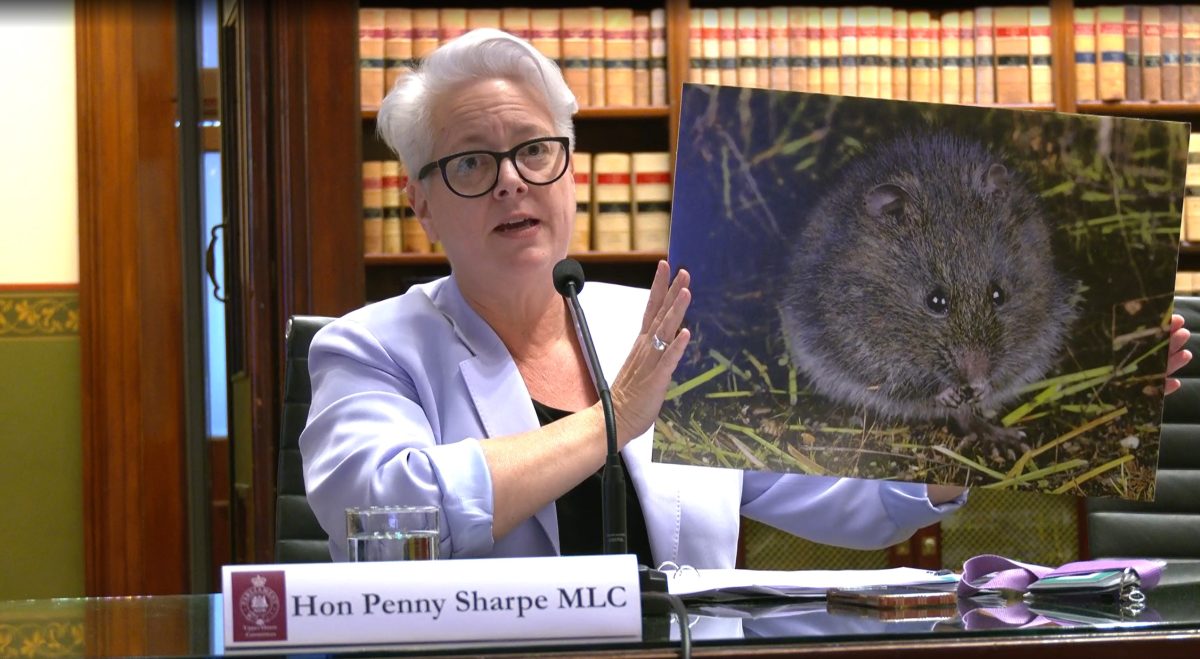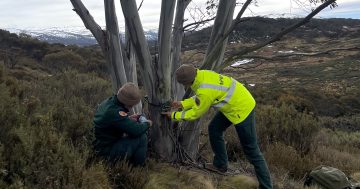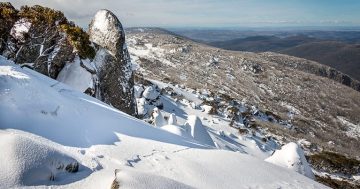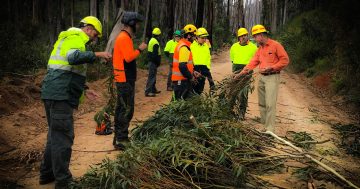
NSW Environment Minister Penny Sharpe advised her fellow parliamentarians last week the broad-toothed rat had been uplisted by the NSW Endangered Species Committee to endangered. Photo: NSW Environment.
The future is looking increasingly grim for several native species in Southern NSW, including a native rodent in the Snowy Mountains, a rare, fire-sensitive eucalypt endemic to ranges between Canberra and the South Coast and tiny flowering shrub known as wrinkled daisy.
With all three species uplisted to endangered by the NSW Threatened Species Scientific Committee last week, the spotlight was reserved for the broad-toothed rat (Mastacomys fuscus mordicus) at last week’s NSW Parliamentary inquiry into the proposed aerial shooting of brumbies in Kosciuszko National Park (KNP).
Appearing before her fellow parliamentarians, NSW Environment Minister Penny Sharp brandished a large glossy photo of the broad-toothed rat, taken from the walls of her offices, and said the primary reasons for the latest development – based on the Commonwealth conservation advice for this species – was that the species had undergone a large reduction in population size with further reductions likely to occur.
Horses, she said, were one of the key drivers of the decline and she wanted the committee to understand that.
The species is known to inhabit fragmented locations across the alpine and sub-alpine regions of southeastern Australia spanning Victoria, NSW and the ACT, preferring high rainfall areas with low temperatures and moderate to dense ground cover of grasses, shrubs or boulders.
It is largely nocturnal, sheltering by day, sometimes communally, in grass nests under dense vegetation or logs but remains active in runways underneath the snow during winter, feeding mainly on the stems, leaves and seeds of grasses and sedges, shrub foliage, fungi, bark and moss.
According to the NSW Threatened Species Scientific Committee advice, wild horses (or brumbies) (Equus caballus) are currently the main threat to the broad-toothed rat, its habitat impacted by trampling which erodes soil and alters vegetation cover.
Evidence of impact is also indicated by deer such as sambar (Rusa unicolor), cattle (Bos taurus), pigs (Sus scrofa), rabbits (Oryctolagus cuniculus) and hares (Lepus europaeus), the report stated.
Climate change, high severity fires, including the 2019/2020 bushfires, and predation by non-native species, including foxes and cats, have also contributed to population declines of the species of around 50 per cent over a 10-year period.
The Invasive Species Council say they are aware that wild horses are not the only significant threat to the survival of the species.
“But as the Federal Threatened Species Scientific Committee said: ‘In each case, impact of feral horses is one of several threatening processes that operate in combination to put species at risk. However, feral horses may be the crucial factor that causes final extinction,” spokesperson Jack Gough said.
“By taking action to rapidly reduce the out-of-control feral horse population in KNP, Minister Sharpe is reducing one of the big pressures driving this Aussie animal to the brink of extinction.
“But it’s also clear that without a significant increase to federal funding to reduce the pressure from feral cats and foxes and an end to the fragmentation of their habitat for development then the broad-toothed rat population will continue to decline.”

Jilliga ash (Eucalyptus stenostoma) and wrinkled daisy (Olearia rugosa subsp. Distalilobata) were also uplifted to endangered status last week. Jilliga ash (Eucalyptus stenostoma) photo: Peter Woodard. Wrinkled daisy (Olearia rugosa subsp. Distalilobata) Photo: Atlas of Living Australia.
Jillaga ash (Eucalyptus stenostoma) has featured in the prose of Australian writer and naturalist John Charles Blay, who amorously referred to the species as “the loveliest gum”, which in their habitat growing on rocky summits along ridgelines are spread, “in every direction as though they were imitating huge pincushions”.
Long lived and slow growing, the trees are characterised by rough fissured, fibrous and grey/black bark on the lower trunk which transitions up higher to a smooth, white or yellow column, tattooed with insect scribbles, with a bark shed in ribbons. It’s haloed by large clusters of leaves, white flowers and gumnuts.
Now the species, found in the Bega Valley, Eurobodalla, Snowy Monaro local government areas, with minor occurrences within the Queanbeyan-Palerang Regional Council area, is also considered endangered and is facing a very high risk of extinction.
Blay’s writing about expeditions throughout the remote wilderness areas of Deua and Wadbilliga national parks offers a firsthand account of the Jillaga ash, which he noted was quite common on steep slopes and ridgelines, in all the most difficult places.
But adverse fire regimes, including high frequency fire and high severity fire, and the interaction between drought and fire has disrupted its life cycle, wholly dependent on seed for regeneration.
According to Currency Creek Arboretum, the recent NSW fires burnt through the entire population of E. stenostoma, one of 85 fire-sensitive eucalypt species, effectively making it extinct in the wild until some of its seeds hopefully germinate.
“Another fire before the seedlings reach maturity may result in its permanent extinction in the wild,” the arboretum stated.
And you’d have to travel a long way – to Mount Imlay (Balawan), 30 kilometres west of Eden – to find an Olearia rugosa subsp. Distalilobata (wrinkled daisy), in NSW, with around 85 of these spindly perennial plants having resprouted since the 2019-20 bushfires among forest ferns and stringybark.
Yet its future is tenuous as it faces recurring threats of timber harvesting, drought and climate change; but bushfire – which has been blamed for wiping out around 98 per cent of the previously modelled distribution in NSW – remains the greatest single threat.
According to the NSW Threatened Species Scientific Committee advice, the potential for the protected Mount Imlay subpopulation to expand into neighbouring areas in East Boyd State Forest may be limited by timber harvesting.












